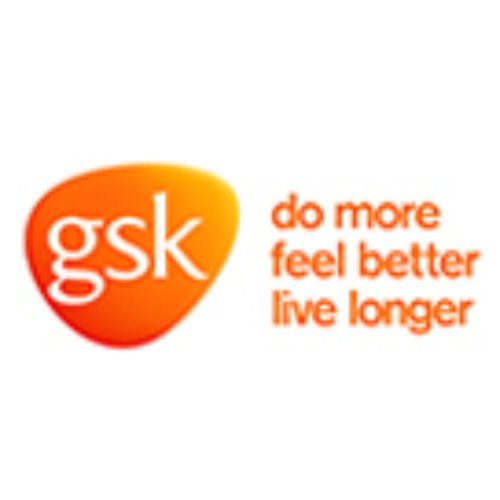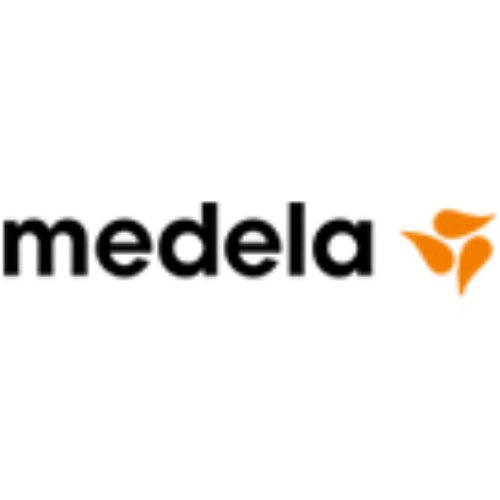Here’s what I do…and what excites me as a film-maker.
When I left behind my corporate career to explore the idea of taking my long time love for photography to a more serious level, little did I know that I would end up creating a full service media production company. Honestly, I had never planned to get into film production at all.
I ventured into professional photography after shooting as a freelancer for newspapers, magazines alongside occasional commercial gigs for print and outdoor campaigns for quite some time. Those who have browsed through my portfolio would know that a good chunk of my work is either fashion or portraiture. In fact, why I got so hooked to photography in the first place was because each assignment allowed me to meet new people on a daily basis and travel to new places every now and then, which continues to be true till date.
Somewhere during the journey, I got intrigued by motion pictures, probably that was the best thing that has ever happened to me. The very first motion picture that I shot was an extremely simple capture of an instrumental cover that a very dear musician friend had recorded. Check the video here if you are curious to know where it all began 🙂
Since then, we have grown in size and scale and I have moved on from being a fashion photographer to also being a Director of Photography at several interesting projects. I have also directed TV commercials, documentaries and films for a diverse set of clients.
How I Contribute
I’d love to contribute at every step of the project. From pre-production to the colorist section.
Key Clients
Photography taught me a lot, and it still strongly reflects in the films I shoot. My understanding and use of elaborate setups of artificial lights reflects in the my work as a cinematographer as much as it is visible in the photos I shoot.
I am and have always been very keen on exploring opportunities with other directors who think I can add value to their projects by bringing in my sense of stylised execution of videos as a director of photography or cinematographer. I truly believe that collaborations are definitely one of the best avenues to learn and develop for an artist. They have always helped me evolve by forcing me to break out of my own comfort zone of presenting a story and work within creative boundaries set up by someone other than myself.
It is good to see that Delhi has become the home away from home for film production houses in India in a very short span of time. The whole ecosystem of supporting cut edge video production has matured over the last couple of years and it is not surprising to witness
The city also has the advantage of being host to the headquarters of most corporate houses. Even though phones and video conferences have brought us closer, nothing matches the clarity of having a discussion in person with the client. Some clients always prefer to be present on the location of the shoot and being the same city is definitely a boon in that case. Delhi NCR also has this unique advantage of being within two hundred kilometres from all sorts of diverse locations. On one hand there are several hill stations and on the other hand, there are some of the best hotels and resorts as well. Being a cinematographer based in Delhi, I have found a plethora of opportunities in which the city has played an integral part.
Although I am open to ideas, there are certain projects that excite me more than other:
Documentaries
I have a mild obsession with documentaries, which stems largely from the fact that I believe that there is no better place than India to shoot documentaries. It’s a country which offers every possible landscape and such diversity in people that there is no shortage of subjects to capture. Even though documentaries have been made in India for decades, it won’t be an exaggeration to say that we have only scratched the surface in terms of topics covered.
Shooting a documentary has its own set of challenges. A technique that I have used several times is, when getting permissions can be complicated, is the run and gun technique, also known as gorilla filmmaking. As the name suggests, this is when me and my team reach a location and before the people in the area realise that there is a shoot going on, capture the footage and leave. This enabled, in our past projects, to shoot in crowded areas without having to manage the crowd, which can be quite cumbersome.
While shooting a big budget movie, it is common to use dollies to shoot moving camera shots. But in documentaries, the time and money almost always does not meet the requirements of a dolly. The surface also needs to be smooth so the dolly does not bounce around when moving during the shot. Over recent years, an alternative to dollies called camera slider has been introduced. It is smaller and was made specifically for small cameras. In case of budget restrictions I have also used skateboards or wheelchairs to simulate the effect of a slider.
Another tool commonly used is a monopod, which is a single staff or pole used to help support video cameras to be held steadier. In case of documentaries, I often have to carry my own equipment because of the low budget. This is another reason the equipment needs to be handy, which can be carried by a single person.
TV Productions (Both commercials and shows)
TV productions require very different capabilities to be executed. In case of commercials, every second means extra cost for airing. Therefore the required information needs to be delivered in an even faster manner.
TV commercials also generally have bigger budgets and require bigger crews. It also requires working and collaborating with diverse set of talents. The quality benchmark is high. Because the cost of TV slots is so high, the stakes are also much higher and margin of error is much smaller. The cost of everyday shoot is also high because of the bigger crew, which means proper planning is required before starting the shoot. One extra day of shooting can mean huge extra costs.
As cinematographer my focus is to make sure I understand not only the concept of the commercial but also the brand that is being advertised. My aim is to come up with a way which allows me to cross the creative aspects with technology, creativity, and entrepreneurship.
While working with TV shows, the role of the cinematographer is crucial in setting the tone of the show, especially at the time of the launch. He has to understand the importance of telling an engaging story and the visual language of the show and come with something which makes the audience stay glued to the screen. As a cinematographer, I embrace a versatile visual style mixed with strong technical knowledge to come up with the best result for TV shows.
Digital Ad Films
Digital platforms like Youtube and Vimeo have been the most dynamic and most impactful part of video content in the last ten years. Even Facebook has altered its algorithm to give clear preference to video content over images and text, by making sure video content goes into the timeline of higher percentage of people. Even Instagram and Twitter are seeing higher and higher percentage of video content.
With more and more players coming in and increasing audience has resulted in quality benchmark of digital content getting higher every passing day. Compared to films, budgets are smaller because of limited monetization.
The content is generally youthful and snappy, which usually requires equipment which can be easily moved around. In this respect, I do not use Arri and Red cameras do not work well for digital, as they are professional cameras which are bulky and cannot be easily manoeuvred. Because of their bulk and complexity, they also require a bigger crew and more time to shoot as well; which results in requiring more time to shoot.
Because of the extensive work that I have done in the digital ad films space, I have developed an understanding of the visual language which works in digital ad films’ space and would love to collaborate with talented people.
I am always looking to collaborate with creative folks to tell good stories with. My dream is to keep on capturing the niceties of light and emotion, through a camera. I am experienced in shooting diverse creative and commercial projects and have worked in varied environment.
For an end-to-end cinematography project, I can break down my process into the following four parts –
Pre-Production Meeting (PPM)
The purpose of a pre-production meeting is to figure out what needs to be shot, once I have taken up a project and reserved my time for it. After having studied the script and storyboards etc, by the end of the PPM, I should be in sync with the director and producer’s vision for the production.
In this meeting, I start with discussing the story and the purpose of the film to be shot and having understood that, I also discuss finalising the crew, booking technical material, allowing for special effects, if any, which locations to scout, décor etc. While discussing all this I get a clearer idea of expectations from me in the shoot. I usually like to give myself at least a week between the PPM and the actual shoot but I have worked in much tighter timelines as well.
Technical location scout
A proper technical location scout is important to avoid time-consuming and possibly money-consuming issues that could lead to double the effort at a later point and lots of frustration. Just the simple act of walking through the location ahead of time helps me evaluate the technical aspects and issues of filming in each place. In the past, it has saved me trouble like realising that the location has no electricity points and required arrangement to be made.
My usual checklist for a location scout includes –
Lighting/power concerns – If there are power concerns and the budget allows, arrange for a generatorCamera angles – Understanding camera angles is the most important aspect of a cinematographer’s job. It helps with pretty much everything, including storyboards, blocking, lighting, art department etc.Set dressing – Sometimes there might be elements which are not supposed to be in the shot, like company logos and posters in the background. And the camera angle cannot be adjusted to avoid them.Production – holding areas for talent, crafty & lunch areas, bathrooms, parking, safety hazards, equipment staging, amount of space available for the shoot etc.
Cinematography
This is the stage in which the actual cinematography takes place. After having planned out the shoot schedules, I go through my routine on the day of the shoot of checking if everything is in order. Handing a complex shoot requires working with numerous variables and different kinds of data at the same time, which I believe is one of my strengths.
In production, I use my understanding of exposure, dynamic range, latitude, color bit depth, resolution, lights, film emulsions, camera settings and lenses to commit to the final image to a huge degree, except the work that is supposed to happen in post-production.
I also engage one or more suitable gaffers as per the requirement of the shoot, along with the key grip, the person responsible for camera equipment. It is good to have a production manager as well to make sure everything and everybody is running on schedule and budgets are not overshot.
Having said that, I should also say that I have been on some shoots where I have handled everything on my own, depending on the budget and requirements of the shoot. I am open to projects of that kind as well, if it is interesting enough.
Colourist session
If I had to describe how I mentally plan a film, I would say that I dream in the pre-production stage, commit in production and confirm and finesse in the post production.
In this session in which I act as the colourist, I go back to the original intention for the cinematography and use my skills as a colourist or DI specialist and further enhance the creative choices.
I’ve had some great partnerships working with some really talented directors. One of the most important elements of those partnerships was trust in each other’s work. A lot of times, directors leave the discussion about colouring until the shoot is done, which is something I would not recommend, as sometimes one can get stuck with a shot which cannot be corrected to go with the language of the rest of the film.
This is all for my approach towards cinematography and I hope this would have given you a good idea that whether I am a good fit for your project or not. If I was, I look forward to hearing from you.
COLLABORATE ON YOUR NEXT PRODUCTION
I’d love to work with you on your next production. I believe I can add value at each stage of the process be it conceptualization, shooting or post production. Reach out for a quick quote.






























